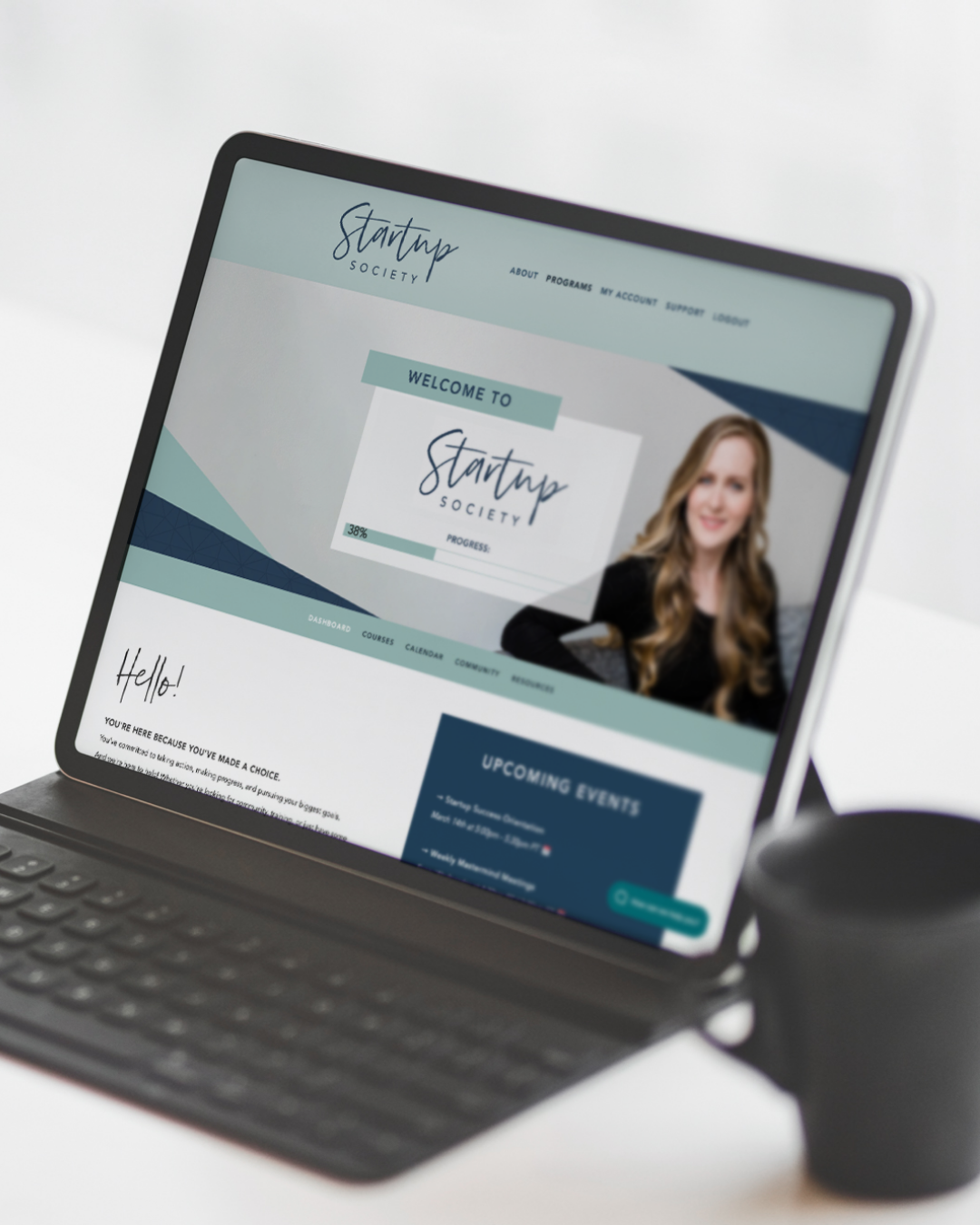How to Grow Your Email List FASTER with a Free Email Course
Why a Free Email Course is So Amazing for List Growth!
Unless you’ve been hiding under a rock for the past five years, I expect you’re aware that a) having an email list is *invaluable* for the success of your business, and b) the best way to grow your list is to offer an incentive — a free, “opt-in offer.”
Growing your email list can have an amazing impact on your business, so let’s get into exactly how to use a free email course to do so.
1) An Email Course Is More Valuable
While internet marketers and other online entrepreneurs have been offering free ebooks and “pdf guides” for the past 10 years, courses have nearly always been charged for. (Quite often charged quite a lot for.)
At this point, many people — especially in the online business and marketing spaces — have become quite numb to ebooks and pdfs. There’s just so many of them out there at this point that their perceived value has been lowered. They’re “a dime a dozen,” as the saying goes.
While your ebook might be totally amazing, people aren’t really interested in handing over their email address to find that out. There’s so much low-quality content out there (“Download my free ebook to learn how I made $100K in just 12 hours!!” bleh) that people have become more wary.
But don’t despair! lol… That free ebook you wrote doesn’t have to be chucked in the trash. A little reformatting can magically increase its value. (I’ll explain in just a moment.)
2) An Email Course Encourages Your New Subscribers to Engage
If you just send your new subscriber a pdf, they’ll likely open it, read it, and then quite possibly forget all about it. When your next email comes around, they’ll stick it in their “promotions” folder or archive it for later, and never look at it again.
After they archive a couple of your emails, Gmail (or Yahoo, etc), will take the hint and start sending your IMPORTANT, valuable emails straight to your subscribers' promotions folder.
And you had so many interesting things you wanted to share with them…
It’s really a shame! But in this age of way. too. much. email, the reality is that many of them will go unopened, unread, and un-acted upon.
Here’s the amazing thing about an email course though — Your new subscriber is expecting and desiring multiple emails. The first lesson (first email) will just wet their appetite for more, and excite them about the next lesson.
Also, because they signed up for a course, they’re much more likely to actually take action on your helpful tips, and then possibly even share their progress with you. (This is huge. Getting subscribers to engage is seriously challenging but also very important.)
3) An Email Course Will Improve Your Open Rates
Because your new subscribers are anticipating multiple emails when they sign up for a course, they are much more likely to actually open emails #2 and #3, rather than only your first email.
Not only does that mean that they get email #2 and #3, it will actually make it much more likely for them to get your future emails in their primary email inbox. Gmail (and Yahoo, etc) pays very close attention to which emails people open, read, click links from, and respond to. The more you can get your subscribers to actually do, the more likely it is for future emails to actually get where they’ll find them.
What’s more, this actually affects how likely other subscribers are to see and open your emails as well. What?! Crazy, I know. But email providers actually keep track of your open rates as a sender, and the more emails you send that people *don’t* open, the more your emails will be considered spam.
You can read all about the interesting, (slightly terrifying) science of email deliverability in this article: https://convertkit.com/deliverability/
How to Create a Free Email Course
One of the best parts of using an email course to grow your list is that it’s actually super easy to create! In fact, I think it’s much easier than an ebook. (And, if you already have an ebook you’ve created, then you can simply repurpose that content for your email course. Your email course is already 90% created in this case!)
An email course is simply a series of emails that teach your subscriber something. You can either teach how to achieve a specific result, or you can just educate them on a specific subject.
(But, hint hint, generally guiding them toward a specific result is better at motivating people to sign up.)
So, without further ado, here’s exactly how to create an amazing email course that will compel your target audience to join your list.
Step 1: Choose a Topic that Will Attract Eventual Customers
You can make an email course about anything, but if you want to create the best results then it’s very important that you choose your topic with the end in mind.
What does that mean? Well, quite simply, choose a topic that would be interesting to your subscriber immediately before your paid product would be desired.
Here are a few examples:
Your product is a dog training course >> so your free course is “how to choose the perfect pet.”
Your product is graphic design services >> so your free course is “how to find the right style for your brand.”
Your product is personal styling >> so your free course is “declutter your closet in five days.”
Your product is jewelry >> so your free course is “find your personal style in three lessons.”
Each of these examples will prepare the target client for purchasing the product, warm them up to YOU as an expert on the topic, and provide an opportunity for you to share the product with them.
Step 2: Outline Your Email Course
Once you’ve decided on the perfect topic that will appeal to your ideal customer, you’re ready to outline your course.
Don’t overcomplicate this! You’re just teaching your subscriber something basic over a few simple lessons. The basic format of your course will be:
Email 1: Introduction
Email 2: Lesson 1
Email 3: Lesson 2
Email 4: Lesson 3
Email 5: Conclusion and a pitch
You can have as many (or as few) lessons in your course as you like. Anywhere between 3 and 30 are common, and 4 – 7 lessons are the most popular.
Step 3: Write Your Email Course
Once you’ve outlined everything, writing the individual emails will really be quite easy. Really, please don’t overcomplicate this. It doesn’t need to be extremely formal, fancy, or even very extensive. Your subscriber will actually be the happiest if you can help them get the result they want in as few steps as possible. (They’re a busy person!)
If you’re not sure what to write, just imagine that you’re talking to a friend and trying to help them do something. “So you want to declutter your closet? Let me help you! Here’s what you should do first…”
Step 4: Setup Your Email Course
Your email course will be delivered as a series of emails, sent automatically to each new subscriber. To do this, you’ll need an autoresponder service, such as Convertkit or Mailchimp.
(Hint: the free version of Mailchimp doesn’t do automatic email sequences like you’ll need for setting up an email course. So if you’re going to use a course to grow your email list, then you’ll at least need the paid version of Mailchimp, or else a different software. Convertkit is my favorite because it makes email sequences super, super easy.)
In your email marketing software, create a new email sequence (series of automated email) and a new form/list. Then create a rule to automatically subscribe everyone who signs up for that list to the new sequence.
Then you’ll simply add the content you wrote (back in step 3) to your email sequence, and you’ll be a good to go.
Step 5: Install Your Email Course
Your email course is all ready for some participants, so now it’s time to create a way for visitors to subscribe. You can place a form on your website anywhere you like, or create a separate landing page exclusively for your free course.
I’d recommend that you do both! Offer your course on the homepage of your website, and also create its own landing page. That way you’ll be able to get the most eyes on your course (everyone who visits your site will see it), and you’ll also have a dedicated page to send targeted traffic to.
(The dedicated landing page will have a higher conversion rate than you’ll get on your website.)
You can use the code provided by your email service provider to install a simple form for your free course, or a third party software (such as Thrive leads, Bloom by Elegant themes, or Optin Monster). If you use a third-party software, just be sure to connect it to the right list/form so that new subscribers receive your course.
Step 6: Drive Traffic (DON’T skip this step!)
Many tutorials might stop at this point. Look — you made an email course! It’s all ready to go! Watch the sign-ups flood in!
But this is not at all how it works. Setting up your email list is only the beginning of the process. It’s the car that can drive you to San Diego, but it’s not “how to get to San Diego.” There’s more to a journey than just procuring the vehicle — and there’s more to growing your list than just setting up the system!
In order to actually attract new subscribers, people have to be aware of your email course. If they don’t know it exists, then they won’t sign up!
There are many ways to drive traffic to your sign up form, including media features, organic social media sharing, and paid advertising. Different traffic strategies work for different businesses, but most do well with a multi-faceted approach that drives traffic from a number of different sources.
The best time to start is now!
If you’re trying to grow your business and your profits, don’t just “wait” for things to change in your business. Take action and make things happen!
join 600+ entrepreneurs inside startup society!
As a Startup Society member, you're shown exactly what to do to grow your business and HOW to do it. You get access to live networking and mastermind events as well as an online community with coach feedback and peer support. Click below to learn more about how to join the #1 online program for action-taking entrepreneurs today!






